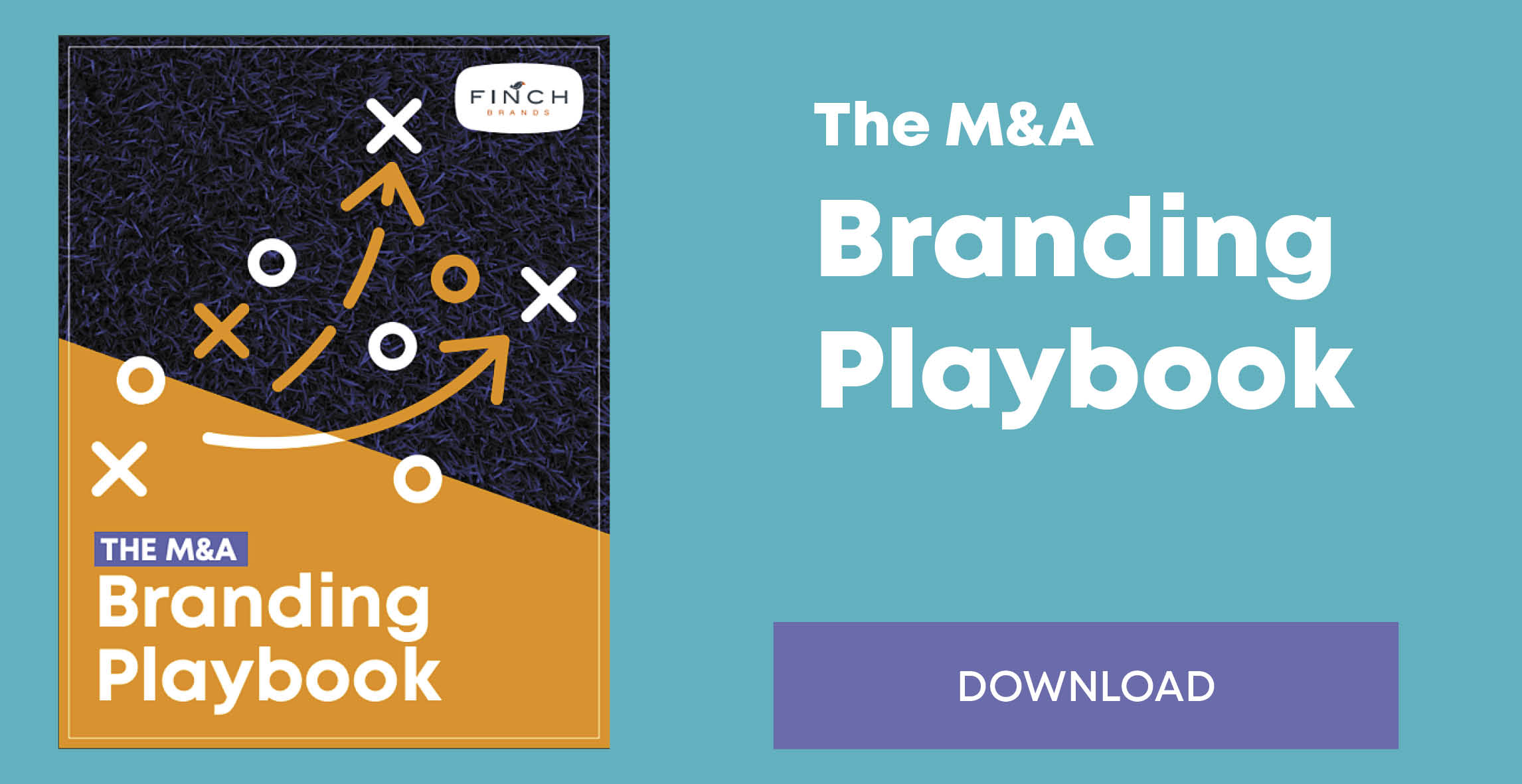Built From the Inside Out: The Internal Side of M&A Branding

The Internal Side of M&A Branding
The best brands are built from the inside out — engaged and inspired teammates create exceptional customer experiences. So, while developing and launching external communications is crucial to the branding process post-merger or acquisition, it is important to consider internal team members as both information source and target audience within M&A branding processes.
Regardless of the structure of the deal, team members from all companies are essential in making sure the deal thesis is actualized. They are a source of deep insight that should ultimately shape the go-forward direction, and they have emotional ties to existing brands/structures/cultures that will need to be carefully navigated to retain top talent and create an emergent company that keeps employees engaged.
Building a post-M&A brand strategy rollout from the inside out focuses on turning employees into brand advocates who can in turn build excitement for external stakeholders and confidently answer customer questions and meet their needs.
Start with listening
Team members from both current and acquired companies should be welcomed into the process, regardless of the structure of the deal, and also be considered a key target audience for process outputs. There are two reasons for this: insight and emotion.
In terms of insight, customer-facing team members see the brand through the clearest lens and can help leadership understand reputational factors germane to decision-making. Often, companies involved in an M&A process were previously competitors. This brings a valuable, practical perspective to brand equity and the strengths and weaknesses of brands in the deal.
Emotion plays a significant role in a change of this magnitude. Engaging employees in this process makes them feel valued and promotes a sense of leadership transparency. An integration process that doesn’t harvest teammate insight and manage emotion risks cultural disunity, lower employee engagement, and loss of top talent.
Employees on all sides seek to understand how leadership sees the future of the organization. Team members (both current and from acquired companies) might have concerns about where they fit within the go-forward company and how an evolving culture will shape their day-to-day reality. For this reason, the HR function is a critical partner in the M&A branding effort.
Now is also the time to revisit purpose, mission, and values for the go-forward entity. The purpose, mission, and values creation process after a merger or acquisition can spark inspiration internally and create team cohesion. The exercise, guided by leadership, can be a team building activity that conveys newness within the organization.
Operationalizing inside-out M&A branding
There are a couple of key moments and work streams that are ideal for broad team involvement. As mentioned, existing and new teammates should be part of the stakeholder insights process. In terms of outputs, here are a few key opportunities:
Purpose, mission, and values
Purpose, mission, and values are fundamental internally-facing artifacts, and M&A activity can be a great time to evaluate (or create) these elements. (Re)evaluating these assets during M&A integration can provide a team-building, visioning exercise for new management teams and inspire existing and new teammates when it comes to the company’s direction.
Importantly, while management teams typically work through purpose and mission, it is strongly recommended that the process of ratifying values include all teammates. Leadership can build some guardrails and then deploy a full-team values survey. Once results come back, craft a final action-oriented list of value statements with leadership input and approval. An M&A branding process that harvests employee input on the front end and then involves broad input on values will feel (and be) transparent and inclusive.
Brand education
Brand education also matters a great deal. As the team approaches the “Day 1” launch, there will be a whole range of “new” things to learn and share, including such fundamental elements as messaging, identity, and go-to-market strategy. Team members are important ambassadors and they will be essential in ensuring customers understand where the brand is going and believe in its evolution.
It is therefore critical that one crafts an internal brand curriculum and launch cadence before the brand is introduced externally. While internal brand education should have a range of associated activities (town halls, CEO video series, team-building training) and artifacts (brand book, onboarding materials, other “swag”), the overriding objective is to provide an experience that will inspire all employees.
Employees who understand and believe in the brand will take actions that drive business results. Leadership should also endeavor to make “Day 1” a meaningful company milestone and provide an opportunity for the entire company to celebrate the hard work that went into the integration process and the entity that has been (re)born through M&A.







